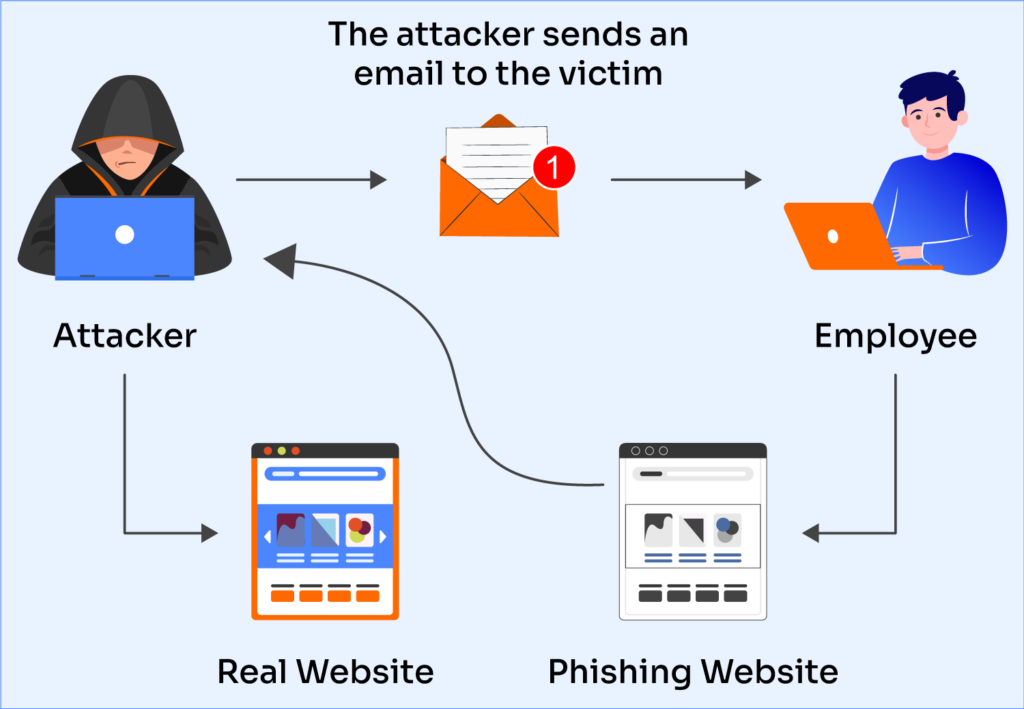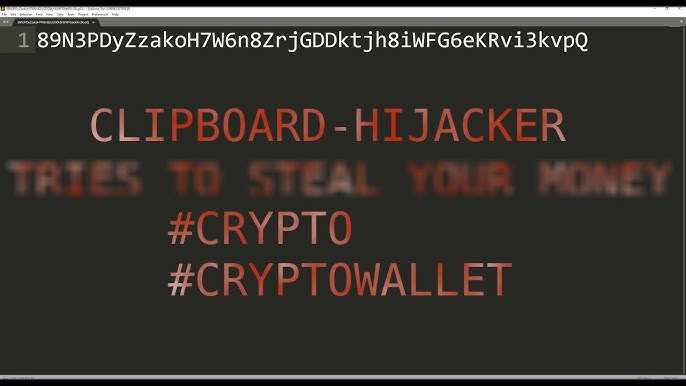Crypto malware attacks targeting crypto users and platforms have increased significantly, with high-profile breaches and scams resulting in millions of dollars in losses.
Understanding crypto malware attacks is critical to protecting your money and sensitive data. As the popularity of cryptocurrencies grows, so does the likelihood of falling prey to increasingly sophisticated cyber-attacks.
Before we discuss the “10 Common Crypto Malware Attacks and How to Protect Yourself,” let’s jump to what crypto malware is.
- 1 What is Crypto Malware?
-
2
Why Crypto Malware Attacks Are Rising
- 2.1 Increasing Value of Digital Currencies:
- 2.2 Anonymity of Crypto Transactions:
- 2.3 Expansion of Blockchain and DeFi technologies:
- 2.4 Lack of Regulations and Consumer Protections:
- 2.5 Increase in Sophistication of Malware:
- 2.6 Increased use of cryptocurrency in ransomware:
- 2.7 Users have low technical awareness
-
3
10 Common Crypto Malware Attacks
- 3.1 Crypto Mining Malware (Cryptojacking):
- 3.2 Phishing Attacks:
- 3.3 Ransomware Attacks:
- 3.4 Clipboard Hijacking Malware:
- 3.5 Trojan Horse Malware:
- 3.6 Dusting Attacks
- 3.7 Man-in-the-Middle (MITM) Crypto Malware Attacks:
- 3.8 Fake Cryptocurrency Wallets:
- 3.9 Double-Spending Attacks:
- 3.10 Drive-by Download:
-
4
How to Protect Yourself from Crypto Malware Attacks
- 4.1 Implement strong passwords and two-factor authentication (2FA):
- 4.2 Keep Software and Devices Updated:
- 4.3 Beware of Phishing schemes:
- 4.4 Use reputable security software
- 4.5 Download Only Trusted Wallets and Apps
- 4.6 Verify addresses before sending cryptocurrency:
- 4.7 Use Hardware Wallets for Long-Term Storage:
- 4.8 Monitor Transactions for Suspicious Activity.
- 5 Conclusion
What is Crypto Malware?
Crypto malware refers to malicious software specifically created to exploit or target crypto users and assets. It works by stealing private keys, transferring funds, or hijacking computing power to engage in criminal activities such as unauthorized crypto mining.
Unlike traditional malware, crypto malware targets digital currencies such as Bitcoin and Ethereum, using the decentralized and often anonymous structure of blockchain transactions to avoid detection and prosecution.
Differences Between Crypto Malware and Traditional Malware
This table provides a quick comparison between crypto malware and traditional malware.
| Aspect | Crypto Malware | Traditional Malware |
| Target Focus | Targets cryptocurrency wallets, exchanges, and blockchain infrastructure. | Focuses on general data theft, personal information, and system disruption. |
| Monetization Method | Gains funds through stolen cryptocurrency, illicit mining, or demanding ransom in crypto. | Monetizes through stolen personal data, financial fraud, or fiat-based ransom. |
| Attack Objective | Steals cryptocurrency, conducts cryptojacking or manipulates blockchain transactions for direct crypto theft. | Steals cryptocurrency, conducts cryptojacking, or manipulates blockchain transactions for direct crypto theft. |
| Anonymity and Tracking | Exploits pseudonymity of cryptocurrencies, making transactions hard to trace. | It is generally easier to trace when fiat currencies or bank accounts are involved. |
| User Impact | Direct financial loss via stolen crypto, unauthorized mining, or loss of access to wallets. | Data theft, identity fraud, or ransomware with slower financial or personal impact. |
| Mode of Delivery | Often spread through phishing, fake crypto wallets, or malicious crypto exchanges. | Spread via email attachments, downloads, and general software vulnerabilities. |
| Resource Exploitation | Hijacks CPU/GPU power to mine cryptocurrency, slowing down the victim’s system. | It may use resources for botnets or spam but typically doesn’t strain system resources like cryptojacking. |
Why Crypto Malware Attacks Are Rising
Some of the reasons for the increasingly high rise in Crypto Malware Attacks are:
- Increasing value of digital currencies
- Anonymity of crypto transactions
- Expansion of blockchain and DeFi technologies
- Lack of regulations and consumer protection
- Increase in sophistication of malware
- Increased use of cryptocurrency in ransomware
- Users have low technical awareness
Increasing Value of Digital Currencies:
Cybercriminals have become more interested in cryptocurrencies such as Bitcoin, Ethereum, and others due to their rising value. Hackers see more opportunities to profit from digital assets as the value of digital assets rises.
The fluctuating but typically increasing trend in crypto prices has made them beneficial targets, with many believing that stealing digital assets is more profitable than traditional hacking methods.
Example: The increased value of Bitcoin has made wallets and exchanges great targets for sophisticated crypto malware attacks.
Anonymity of Crypto Transactions:
One of the enticing elements of cryptocurrencies is their anonymous nature, which protects users’ privacy. However, this same feature appeals to cybercriminals.
Unlike traditional banking systems, where transactions can frequently be traced and reversed, bitcoin transactions are irreversible, and it is difficult to track down the culprit.
This lack of traceability empowers attackers, who know that if they steal cryptocurrencies, victims will be unable to recover their assets.
Attackers can move stolen cryptocurrencies to anonymous wallets, making it nearly hard for law enforcement to track the funds.
Expansion of Blockchain and DeFi technologies:
The growing popularity of blockchain technology and decentralized finance (DeFi) platforms has opened up new opportunities for cybercriminals. With more people using DeFi, NFTs, and other blockchain-based services, the attack surface has grown.
Many users and platforms in this field are still learning how to manage the security challenges associated with decentralized ecosystems, leaving them exposed to complex crypto malware attacks.
Example: Hackers exploited vulnerabilities in DeFi smart contracts, resulting in huge losses for both users and platforms.
Lack of Regulations and Consumer Protections:
Compared with traditional financial institutions, crypto marketplaces are largely unregulated. Because of this lack of control, users have fewer protections in place, particularly when they are targeted by crypto malware.
Traditional banking allows users to retrieve stolen funds or reverse transactions, while cryptocurrency’s decentralized design provides no such safety net.
This regulatory loophole leaves customers vulnerable to attackers, with few options for recovering stolen assets.
Increase in Sophistication of Malware:
The sophisticated nature of malware targeting cryptocurrencies rises in line with its popularity. Cybercriminals are constantly creating new sorts of crypto malware attacks to avoid detection, such as clipboard hijackers, cryptojacking software, and fake wallet apps.
These advanced forms of malware attack bugs in cryptocurrency wallets, exchanges, and even user habits, allowing hackers to steal assets undetected.
Example: The growth of cryptojacking, in which hackers secretly mine crypto using hacked computers, indicates how evolving malware strategies capitalize on the growing demand for cryptocurrencies.
Increased use of cryptocurrency in ransomware:
Ransomware attacks that seek cryptocurrency payments are now commonplace. The simplicity of accepting untraceable payments in Bitcoin or other cryptocurrencies has prompted cybercriminals to employ ransomware as a primary attack strategy.
Victims are frequently persuaded to pay huge amounts in crypto due to the irreversible nature of transactions and the difficulties of tracking the money flow.
Example: Many high-profile ransomware operations, such as those targeting major organizations and governments, demand payment in Bitcoin because it guarantees both secrecy and finality.
Users have low technical awareness
Despite the increasing popularity of cryptocurrencies, many users lack the technical understanding required to protect their funds. Simple mistakes like downloading fake wallet apps or using unsecured exchanges expose users to crypto malware attacks.
This lack of understanding among novices to the cryptocurrency industry boosts the success rate of phishing attacks, Trojans, and other forms of malware.
As more people enter the crypto space, attackers are increasingly exploiting weak security measures to steal digital assets.
The above factors help to explain why crypto malware attacks are on the rise, as the increasing value, anonymity, and lack of regulation in the cryptocurrency industry give hackers numerous chances to exploit.
10 Common Crypto Malware Attacks
The following are 10 common crypto malware attacks:
- Crypto Mining Malware (Cryptojacking)
- Phishing Attacks
- Ransomware Attacks
- Clipboard Hijacking Malware
- Trojan Horse Malware
- Dusting Attacks
- Man-in-the-Middle (MITM) Crypto Malware Attacks
- Fake Cryptocurrency Wallets
- Double-Spending Attacks
- Drive-by Download
Crypto Mining Malware (Cryptojacking):
This type of crypto malware attack covertly mines crypto on a victim’s computer or network without their permission. It performs sophisticated calculations using the target’s processing power (CPU or GPU), which consumes resources and drastically slows down devices.
- Example: This type of malware can be spread by malicious websites, phishing emails, or compromised software.
- Example: Websites with malicious scripts that run crypto mining in the background when a person visits the page.
This is one of the most common crypto malware attacks, affecting both individuals and organizations via infected websites, malicious downloads, and compromised cloud services.
Phishing Attacks:

Phishing attacks use fake websites or emails to deceive users into disclosing sensitive information, such as private keys or login details. These fake platforms frequently mimic popular cryptocurrency exchanges or wallet services, tricking users into inputting personal information.
- Example: Phishing attacks have targeted popular cryptocurrency exchanges such as Binance and Coinbase, luring users to fake login monitors and stealing their passwords.
Ransomware Attacks:

Ransomware encrypts crucial files and demands a crypto payment to restore access. The adoption of Bitcoin and other cryptocurrencies as untraceable forms of payment have made attacks involving ransomware more popular among cybercriminals.
- Example: Cryptocurrencies’ anonymity and difficulties in tracing payments make them appealing for ransomware attacks, making it difficult for victims to recover their assets.
Clipboard Hijacking Malware:

This malware inspects the victim’s clipboard for the crypto wallet address. When the victim copies and pastes a wallet address to initiate a transaction, the malware substitutes the legitimate address with the attacker’s wallet address, resulting in the funds being transmitted to the hacker instead.
- Example: After copying a crypto address to send a transaction, you discover that the money has been transferred to an unknown account as a result of clipboard hijacking.
Trojan Horse Malware:
Trojan Horse Malware refers to harmful programs that are disguised as legitimate software or apps. In the case of cryptocurrencies, they can steal private keys and login login details or even install cryptojacking programs on a victim’s device. Trojans are frequently spread via fake crypto wallets or trading apps.
- Example: A fake crypto wallet app that appears to be authentic yet takes your private keys once installed.
Dusting Attacks
Dusting crypto malware attacks involve hackers transferring small amounts of crypto, known as “dust,” to several wallet addresses. The goal is to track and analyze these minor transactions in order to de-anonymize the wallet owners.
By connecting wallet addresses to real-world identities, criminals can target users with phishing or other crypto-malware attacks.
Man-in-the-Middle (MITM) Crypto Malware Attacks:
Man-in-the-middle (MitM) attacks include intercepting communication between a user and a cryptocurrency exchange or wallet provider. Eavesdropping on these conversations allows attackers to acquire login passwords and private keys or manipulate transaction information, granting them unauthorized access to the user’s cryptocurrency assets.
Fake Cryptocurrency Wallets:

Fake crypto wallets are malicious programs that steal private keys and funds from users. These fake wallets frequently look like authentic apps, but once installed, they steal sensitive data and allow attackers to withdraw the victim’s assets.
Warning: To avoid fake wallets, users should only download wallets from trusted sources, such as official app stores or the crypto provider’s website.
Double-Spending Attacks:
A double-spending attack involves a hacker exploiting weaknesses in blockchain protocols to spend the same cryptocurrency twice. They can mislead merchants or people by altering the transaction history to make it appear as if they sent funds while also utilizing the same coin for another transaction.
Drive-by Download:
Drive-by downloads are when a malicious website automatically installs malware onto a user’s device without their consent. Once installed, this malware can attack cryptocurrency wallets or exchange accounts, stealing private keys, login login details, or monitoring clipboard activity to redirect funds to the attacker’s wallet.
How to Protect Yourself from Crypto Malware Attacks
Below are ways you can protect yourself from crypto malware attacks:
- Implement strong passwords and two-factor authentication (2FA)
- Keep Software and Devices Updated
- Beware of Phishing schemes
- Use reputable security software
- Download Only Trusted Wallets and Apps
- Verify addresses before sending cryptocurrency
- Use Hardware Wallets for Long-Term Storage
- Monitor Transactions for Suspicious Activity
Implement strong passwords and two-factor authentication (2FA):
Best Practices:
Creating strong passwords and using Two-Factor Authentication (2FA) are critical steps toward protecting your crypto accounts.
Creating Strong Passwords:
Create strong passwords by combining upper and lower case letters, numbers, and special characters.
Aim for 12-16 characters to improve complexity.
Avoid providing easily guessed information, such as birthdays or common terms.
To increase security, enable two-factor authentication on all crypto exchanges and wallets.
Authentication tools such as Google Authenticator or Authy are more secure than SMS-based verification.
Implementing these precautions greatly minimizes the danger of unauthorized access to your accounts, making it more difficult for attackers to steal your crypto assets.
Keep Software and Devices Updated:
Regularly updating devices and software is crucial for cybersecurity, especially in the crypto world. Software updates frequently include essential fixes that address security flaws that malware may exploit.
Steps: Enable automatic updates for your operating system, antivirus software, and programs.
Check your crypto wallets and exchanges on a regular basis for new updates.
Keep your devices free of any unused software that could pose risks.
Staying up to date guarantees that you have the most recent security features and protections against emerging risks, thereby protecting your crypto investments.
Beware of Phishing schemes:
Tips:
Cybercriminals frequently use phishing schemes to steal cryptocurrency. Being able to recognize these scams is critical for safeguarding your investments.
Identifying phishing emails: look for unusual sender addresses or little differences in domain names.
Check for bad grammar, spelling errors, or urgent wording intended to provoke immediate action.
Spotting Fake Websites:
Always check the URL of a website before entering your credentials. Ensure that it uses HTTPS and has the exact same address as the real site.
Avoid clicking on links in unsolicited emails; instead, use your browser to visit websites.
By remaining cautious and implementing these measures, you can greatly reduce your chances of falling victim to phishing scams designed to compromise your cryptocurrency accounts.
Use reputable security software
Tools:
Antivirus programs: Make sure your devices are equipped with trusted antivirus software that actively detects and prevents malware. Look for software that provides specific crypto security capabilities, such as real-time monitoring for crypto mining malware.
Example: Bitdefender, Norton, and Malwarebytes are popular options for crypto malware detection.
Browser extensions: Use privacy-focused browser extensions like uBlock Origin or MetaMask to prevent dangerous websites and phishing attempts.
Additional Security: Some extensions provide built-in crypto wallet protection, which prevents malicious scripts from operating while surfing crypto-related sites.
Download Only Trusted Wallets and Apps
Advice:
Official Stores and Platforms: Always get crypto wallets, trading apps, and software from official app stores (Google Play, Apple App Store) or the provider’s verified website.
Avoid Third-Party Websites: Downloading from unauthorized sources raises the possibility of malware-infected programs, which could compromise your crypto wallet or account.
Check the reviews and ratings: Before downloading, make sure the program has received positive feedback and high ratings from authentic people. Fraudulent apps frequently receive negative or fake reviews.
Verify addresses before sending cryptocurrency:
Warning:
Double-check the wallet addresses: Before transferring any crypto, always thoroughly verify the wallet address. Clipboard hijacking malware can change the address when pasted, resulting in irrevocable financial loss.
Use QR Codes: Many wallets and exchanges support the use of QR codes to automatically enter the proper address, avoiding human mistakes and preventing clipboard manipulation.
Bookmark Trusted Addresses. Bookmark or save wallet addresses to prevent having to enter them again.
Use Hardware Wallets for Long-Term Storage:
Protection:
Offline Storage: Hardware wallets, like the Ledger or Trezor, store private keys offline, protecting them from malware that attacks online wallets and exchanges.
Avoid Online Wallets for Large Holdings. For long-term crypto storage, avoid using online exchanges or hot wallets that are prone to hacking and malware.
Backup & Recovery: Make sure you properly back up your hardware wallet recovery phrase in a safe, offline place.
Monitor Transactions for Suspicious Activity.
Caution:
Be Alert to Transaction History: Check your transaction history on a regular basis for any unauthorized or suspicious activity that might indicate malware has gained access to your funds.
Set alerts: Many exchanges and wallets allow you to create transaction alerts. Activate these notifications to receive quick notifications of funds movement.
Use a blockchain explorer: To check transactions further, use blockchain explorers such as Etherscan or Blockchain.info to monitor all crypto moves involving your wallet.
Conclusion
Staying current on crypto malware attacks is critical in the evolving space of digital assets. As cryptocurrencies gain popularity, cybercriminals develop new strategies, making it crucial for users to recognize the potential threats.
Learning about common attack vectors like phishing scams, cryptojacking, and ransomware can help you secure yourself and your digital investments.



